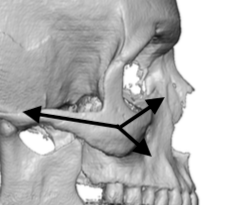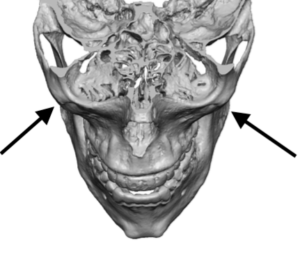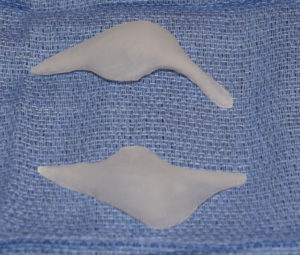Background: Aesthetic augmentation of the cheeks is available to be done by a variety of implant types. Most standard cheek implants provide augmentation to the zygomatic body section of the cheek in an oval shaped geometry. While such a more rounded fullness effect to the cheeks may be favorable for some, such implants can not produce a more defined or angular type of cheek look. Such a rounded cheek augmentation effect is typically unfavorable to most men.
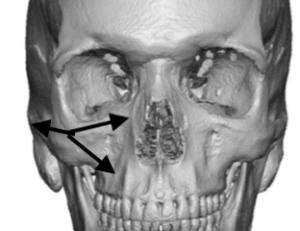
Therefore, to get the ‘high cheekbone look’ the implant’s shape needs to follow the bony anatomy in a linear direction. This means posteriorly along the zygomatic arch and anteriorly along the infraorbital rim. The greatest projection of the implant is located over the zygomatic body but the anterior and posterior limbs provide a natural flow into the bone that essentially looks like the underlying bone was merely expanded.
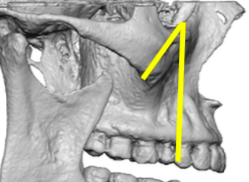
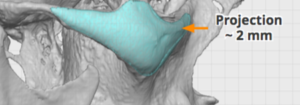

Many cheek deficiencies are associated with some recession of the infraorbital rims. This makes anatomic sense given the bony connection between the two. Without an infraorbital rim extension any augmentation to the main body of the cheek will make the infraorbital area look more recessed. In addition to acquire a high cheek bone look there must be some extension of the implant back along the zygomatic arch. Thus the infraorbital-malar implant design has a linear augmentation the rim-cheek-arch line.
Case Highlights:
1) Specially designed custom cheek implants can provide the high cheekbone look.
2) The infraorbital-malar implant is almost always best introduced through a lower eyelid incision for proper positioning on the bone.
3) The infraorbital-malar implant provides a linear augmentation line to the midface.
Dr. Barry Eppley
Indianapolis, Indiana



